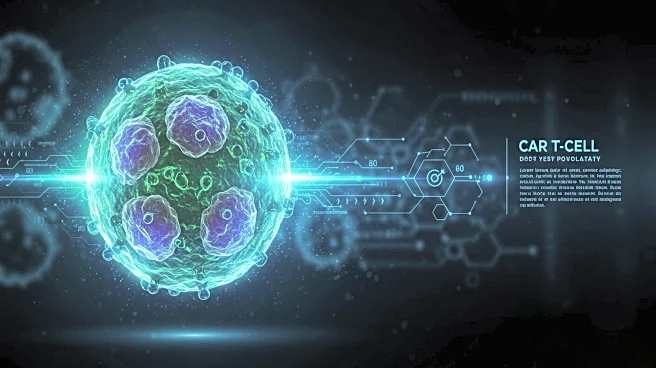What is the story about?
What's Happening?
CARsgen Therapeutics Holdings Limited has announced its 2025 interim results, showcasing significant progress in CAR T-cell therapy development. The company reported cash and bank balances of approximately RMB1,261 million as of June 30, 2025, with expectations to maintain adequate cash into 2028. CARsgen has completed certification and regulatory filings for its zevor-cel product in over 20 provinces or cities, receiving 111 confirmed orders from its commercialization partner Huadong Medicine. The Center for Drug Evaluation of the National Medical Products Administration of China has accepted the New Drug Application for satri-cel, a CAR T-cell product targeting solid tumors. CARsgen is advancing multiple allogeneic CAR-T products for various treatment areas, including hematologic malignancies and autoimmune diseases.
Why It's Important?
CARsgen's advancements in CAR T-cell therapies are crucial for addressing unmet clinical needs in treating hematologic malignancies, solid tumors, and autoimmune diseases. The acceptance of the New Drug Application for satri-cel marks a significant milestone as it targets solid tumors, expanding the potential applications of CAR T-cell therapies. The company's financial stability and strategic partnerships, such as with Huadong Medicine, enhance its ability to commercialize innovative treatments and improve patient access. These developments position CARsgen as a leader in the biopharmaceutical industry, potentially influencing global cancer treatment standards.
What's Next?
CARsgen plans to continue its commercialization efforts for zevor-cel, leveraging China's insurance system to improve patient accessibility. The company anticipates accelerated sales growth with ongoing marketing activities and broader insurance coverage. CARsgen is also advancing its allogeneic CAR T-cell product candidates, utilizing proprietary platforms to enhance therapeutic efficacy. The company aims to expand its clinical trials and regulatory approvals, potentially leading to new treatment options for various diseases.
AI Generated Content
Do you find this article useful?











